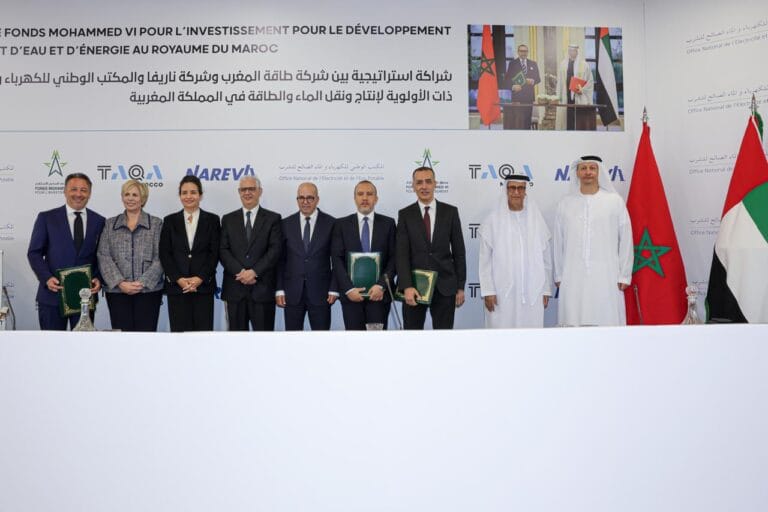A strategic partnership between Morocco and the United Arab Emirates is set to transform the national landscape of water and energy. Driven by the Mohammed VI Fund for Investment, TAQA Morocco, and NAREVA, a vast program has just been launched in coordination with the Moroccan government and ONEE. The objective is to develop major infrastructure for transportation, desalination, and electricity production, with a focus on energy sovereignty and water resilience by 2030.
A project that meets national urgencies
This program directly stems from the joint declaration signed on December 4, 2023, between King Mohammed VI and Emirati President Mohamed bin Zayed Al Nahyan. It is part of a concrete response to the growing challenges related to water scarcity and pressure on the national electricity grid. Ultimately, it will help structure a new supply model based on innovative, sustainable, and competitive solutions.
Structuring projects across the territory
One of the key components of the program concerns the transfer of water resources between the Sebou and Oum Rabia basins, with an annual capacity of 800 million m³. This project will help alleviate the stress on water-scarce regions, particularly in the central part of the country.
At the same time, new desalination plants with a total capacity of 900 million m³ per year will be built, powered exclusively by renewable energies. A pricing cap of 4.5 dirhams excluding tax per m³ is targeted to ensure equitable access to this vital resource.
An electrical corridor from South to Center
The energy aspect is also significant. A 1,400 km HVDC line will connect the southern provinces to the center of the Kingdom, with a capacity of 3,000 MW. This new axis will better integrate renewable energies produced in the South and relieve congestion on the national grid.
The plan also includes the addition of 1,200 MW of renewable energy and the establishment of combined cycle natural gas plants in Tahaddart, totaling nearly 1,500 MW. A mix that combines stability, flexibility, and gradual decarbonization.
A lever for employment and local industry
Beyond its technical aspects, the program aims to have a strong socio-economic impact: more than 25,000 jobs will be created, including 10,000 permanent jobs after the infrastructure comes into service. It will also promote the emergence of an industrial ecosystem around desalination and green energies, with opportunities for training and knowledge transfer.
Rapid implementation under high vigilance
Each project will be subject to dedicated agreements with ONEE. The first milestone has already been set with the launch of the Tahaddart plants. Financing will be provided by the consortium and mobilized from Moroccan and foreign funders. The entire process will be governed by the existing regulatory procedures, particularly those governing concentration operations.
This partnership illustrates a common ambition: to build a future infrastructure that combines sovereignty, sustainability, and technological excellence.


